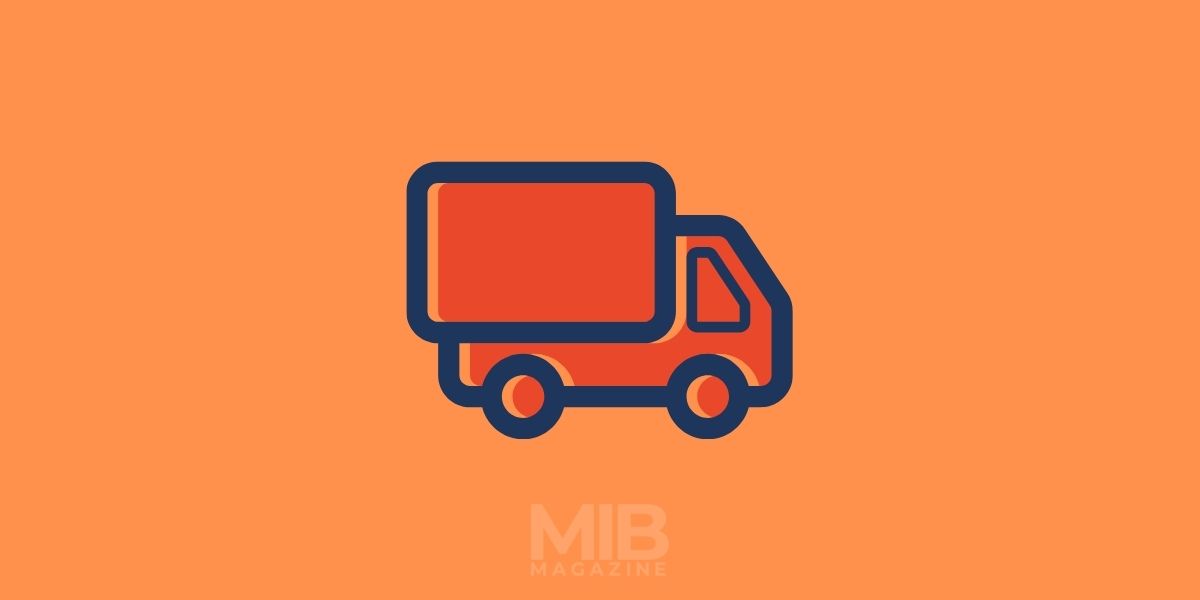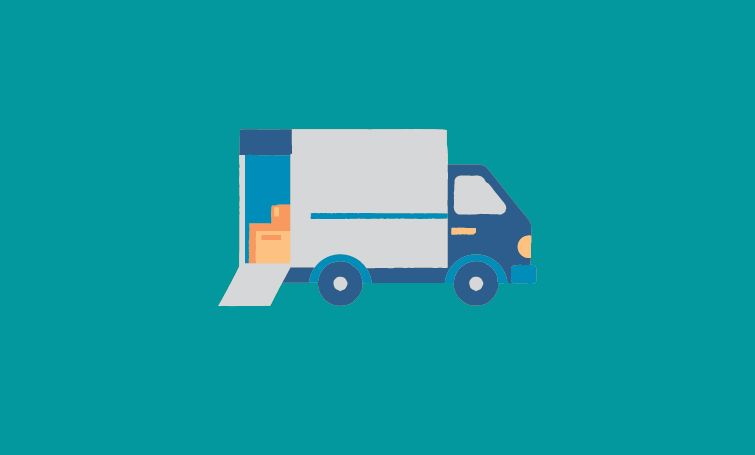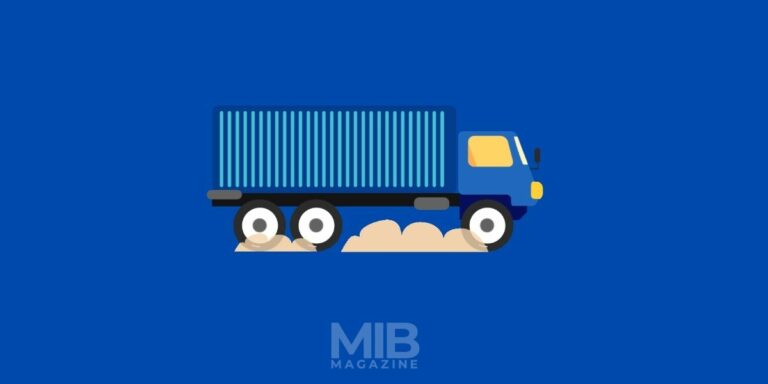Starting a Fruits & Vegetables Transportation & Handling Business

Most of the vegetables have a shelf life of a few days to few weeks while some can last longer than months. This article deals with transportation of both perishable and non-perishable fruits and vegetables.
Transportation in general means movement of some item from one place to another using air, road, water and rail. For this article, our concern is limited to road transportation using trucks, trailers and vans.
The United States Fruit and Vegetable market comprises a $104.7 billion industry as of 2016. The global food logistic market where transportation also has a major share is growing at 8.3% CAGR during 2019-2024 period. The global market size for the same just crossed the $100 billion mark in 2018 and is expected to reach $162 billion by 2024.
Since there are two types of vegetables, one that has a short life period of a few days and is perishable and the other one that is non-perishable, transport methods will vary accordingly.
The Food and Drug Administration of the United States or the FDA deals with regulations and laws related to food management, its consumption and control. The Food Modernization Safety Act, 2011 which was implemented in 2017 regulated and controls the transport of food produce that also includes vegetables.
There are certain guidelines that need to be adhered to in order to run your vegetable transportation business. So, let us get started and discuss the components of your business plan.
Objective of your Business:
The major objective of your business is to transport vegetables. As we know from above, there are distinct types of vegetables but with two broad categories namely perishable and non-perishable vegetables.
Perishable vegetables require extra care, diligence and temperature control while non-perishable vegetables require a bit less of that though still guided by the FMSA.
Before you start, you need to determine whether you want to transport perishable or non-perishable vegetables since both require distinct ways of transportation.
Requirements to Start your Business:
There are certain necessary requirements you need to transport vegetables. These are:
- Truck and Trailer
- Covered Boxes or Trailer to avoid rainfall, scorching heat, cold wind, dust, etc.
- Refrigerated trailer to preserve perishable items from decaying.
- Safety mechanism to avoid damage of vegetable while transporting
- Ramps, stair, trolley, and other required articles to facilitate loading and unloading
- Driver along with assisting staff
Perishable goods require extra care related to temperature control, damage control, preservatives, cleanliness, etc.
In some cases, you might also be required to pack the vegetable in the way required while transporting. Well, in most cases, this job is basically done by your client who has to ensure basic safety.
Soft vegetables like tomatoes get damaged during transportation. Therefore, they are packed in boxes in small quantities to avoid damage due to jerking when the truck moves.
Food Modernization and Safety Act, 2011 Guidelines:
FMSA requires certain norms to be followed in order to transport vegetables. It has laid down certain standards to ensure food safety and quality. They are:
- Thorough cleanliness of vehicle along with the container in which vegetables will be transported.
- Having adequate mechanism and equipment required to load, unload and transport vegetable
- Having necessary mechanism to preserve vegetables during transportation avoiding damage of vegetable
- Following proper protocol of sanitization during transport like handwash, cleaning the vehicle, container, trolley, boxes, etc.
- Proper refrigeration and temperature control for different vegetables per need
- Properly trained drivers and staff who have good understanding of vegetable transport
- Documentation of compliance, permit and license along with other necessary documents.
These are some basic requirements and the list is not exhaustive. You have to dig deeper to know about fine details from FDA regulations.
Truck and Carrier:
In order to transport vegetables, you require a truck carrier or any other similar transport of nature. The size of the truck depends upon the consignment in hand. Well, that is not the alone criteria, it also depends upon the distance you are covering at average.
For example, if you are transporting vegetables to a farther distance say from one city to another, you might probably pick up a larger consignment as it will be cost effective for you. Similarly, if the distance is short, say intra-city, then you can have a medium or small size truck carrier.
Your truck carrier should be working efficiently and should also have fitness certification as you might be travelling long distances and an engine failure can be very expensive given the perishable goods may get damaged.
The trailer and the container that will carry the vegetables should also be clean, fully covered and in proper condition. It should not be leaking, or rusted or in a situation that can damage the vegetables inside.
Transport Route, Distance and Durational Aspect:
The most important of all points are these three. It will determine various other aspects of your business.
Transport route is basically the road route you will take to transport vegetables. Now, you can’t always predict the nature of the route you will travel in future. But your area of operation can determine it in some ways.
If you are taking a short distance intracity route then you may get stuck in jams, may also face jerks due to road conditions, too much movement of vehicle, etc. There might be delays as well during transportation.
If you are traveling long distances then probably you will be taking a highway which will be smooth but will take longer duration since the distance will be much more. Highways are subject to weather extremes, maybe too hot or cold weather with dust particles around.
Long distance routes will also lead to engine break or other vehicular fault in between that can cause hardship. Thus, you need to prepare for such situations in advance and should also equip your vehicle accordingly.
The size of your truck will also be largely determined by the same reason that long distance travel means larger consignment that will be cost effective for you. In case you are not able to deliver on time or the vegetable inside gets damaged or decayed, then you will have to bear the cost. Ensuring each travel is therefore necessary.
Refrigerated Containers:
Perishable vegetables generally are subject to a smaller life and decay within 2-3 days. Also, because of their tender nature, they are also subject to damage while transportation, often due to jerking from vehicles, rough handling during loading and unloading.
Refrigeration or controlling temperature often ensures longevity of the vegetable and that ensures that whatever was loaded reaches as it is when it is unloaded. Harsh weather, especially summer, causes maximum harm to such vegetables.
Many of the trucks these days have refrigerated containers that are aimed to provide better transportation experience and reduce damage. Especially during longer transportation time, this is a must for all perishable vegetables.
You need to install refrigerators inside your container. Due compliance of the regulations is necessary to ensure that the refrigeration mechanism works properly without any accident during travel.
Especially when you are transporting vegetables that are of perishable nature, equipping your truck with refrigerated containers is a must. It gives you an edge in the industry.
Driver and Staff:
The job of the driver is to drive the truck safely and ensure that it reaches the destination on time. Another additional job of the driver is to be careful of the fact that there are tender items inside that can get damaged due to constant jerks while driving.
He must also be well trained to solve general faults in the vehicle. A dysfunctional truck in between the route is the cause of severe headache for all the parties involved.
The assisting staff must be well trained in managing the whole of affairs right from loading to transportation and to unloading. He should also be skilled in driving as an alternate driver.
The basic job of the staff is to accompany the driver, help him in driving, accounting the items loaded, at what time, record the necessary details of transportation journey, keep updating the office and to also unload the consignment, obtain clearance from the party where the consignment is to be delivered and keep proper accounts of the same.
Practical Aspect of the Business:
Defining your role in the whole business is important. Are you going to be just a manager sitting from your office and managing things or are you going to play an active part in the whole game.
Generally, people who start this business often do most of the things on their own. It also saves extra expense of employing others. In the initial days of business, you will not be able to make much since you might not always have packed working hours.
It is better to be the driver of the truck managing things directly on your own and you can employ an assisting staff for yourself. It will give you first hand experience to know better about client demand, the nature and challenges the business offers, how you can be more effective and lastly, how you can make profits.
The expense and profit expense is also very important. Having a truck whether through purchase or otherwise will cost you much. Maintenance, fuel cost, repair work, etc. will also cost you in addition.
Similarly, if you have a refrigerated container then maintaining it will also be an additional expense. Complying with norms, obtaining permits, and licenses will be taking a toll on your budget.
In this, avoiding expenses that can be avoided is the best. Profit is something that cannot come in a day. You will have to work hard for some time to get regular work.
The best way is to first work in this industry for sometime, learn the art, make contacts and then start it with your own business plan. Joining a company that already has regular work can be better since you will be employed regularly and will be making a decent profit regularly.
Be in touch with someone already in this industry as he will help you out and will guide you so that whatever steps you take goes into the right direction.
FAQs
Proper storage of fruits and vegetables after transportation is essential to ensure their quality is maintained. Fruits and vegetables should be cooled as quickly as possible and stored at the right temperature. Highly perishable produce should be stored above 5 degrees centigrade and other fruits and vegetables stored between 0-5 degrees centigrade.
Packaging used for transporting fruits and vegetables should be designed to protect the produce from physical damage and spoilage. It should also be breathable to maintain the quality and texture of the produce.
Fruits and vegetables should always be stored and transported at the right temperature to avoid spoilage. Depending on the type of produce, different temperature requirements should be met to maintain the quality and texture of the produce. As a general rule, highly perishable produce should not be in transit for more than 12 hours and should be refrigerated as soon as possible.
Generally, yes. As long as loading and unloading is done safely to avoid cross-contamination and all food products are stored at their correct temperature and humidity levels.
Fruits and vegetables should be handled with care during transportation to avoid damage, bruising and spoilage. For example, produce should not be stacked too high, dropped or jostled, and care should be taken to prevent cross-contamination during loading and unloading.
Safety precautions should be taken to ensure that all food products are transported safely and free from contamination. This includes making sure all transportation equipment is maintained and in good working order. Other safety precautions include proper sanitization of all packaging materials and containers, ensuring proper temperature and humidity levels are maintained, as well as ensuring cross-contamination is avoided during loading and unloading.
Yes, temperature-controlled transport is essential for maintaining the quality and texture of all fruits and vegetables. Produce needs to be stored in conditions that maintain their freshness, texture and shelf-life, meaning that temperature-controlled transport should be used and monitored at all times.
Cross-contamination can be avoided by taking proper hygiene and safety precautions during the transport of all food items. This includes cleaning and sanitization of equipment, proper storage and segregation of food products, as well as careful handling and loading and unloading of produce.
Fruits and vegetables need to be handled with care and great attention to detail during loading and unloading to avoid damage, spoilage and contamination. Loading and unloading should be done quickly and in accordance with the appropriate food safety and storage guidelines.
Damage to produce during transportation can be minimized by using the correct packaging and temperature-controlled transport, carefully loading and unloading produce and avoiding rough handling. If any produce looks damaged, it should not be used and should be discarded immediately.






